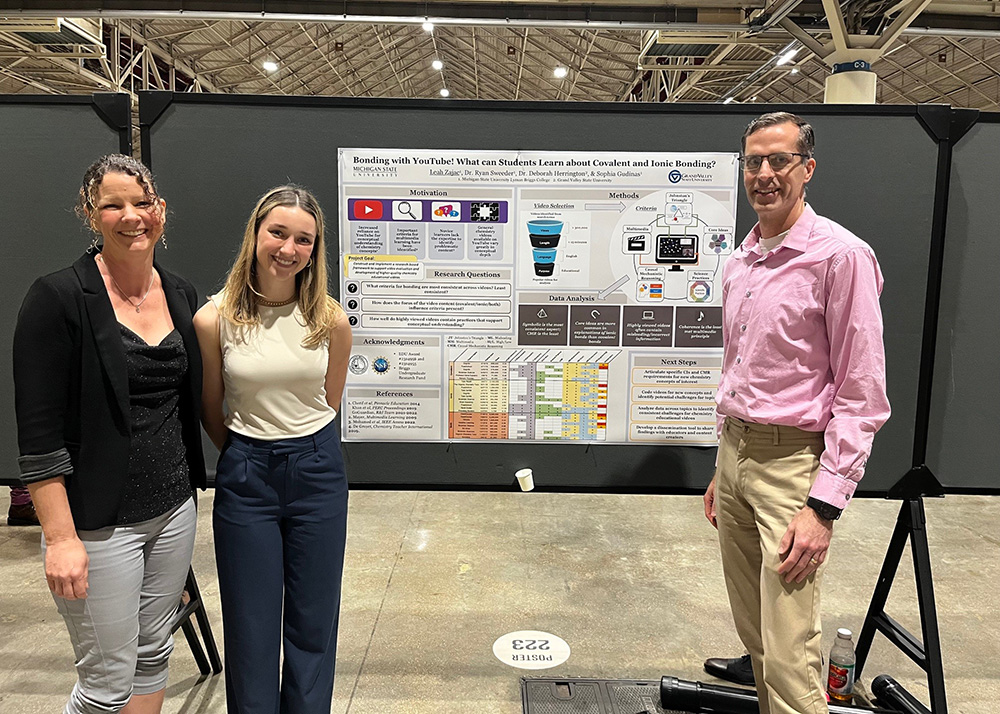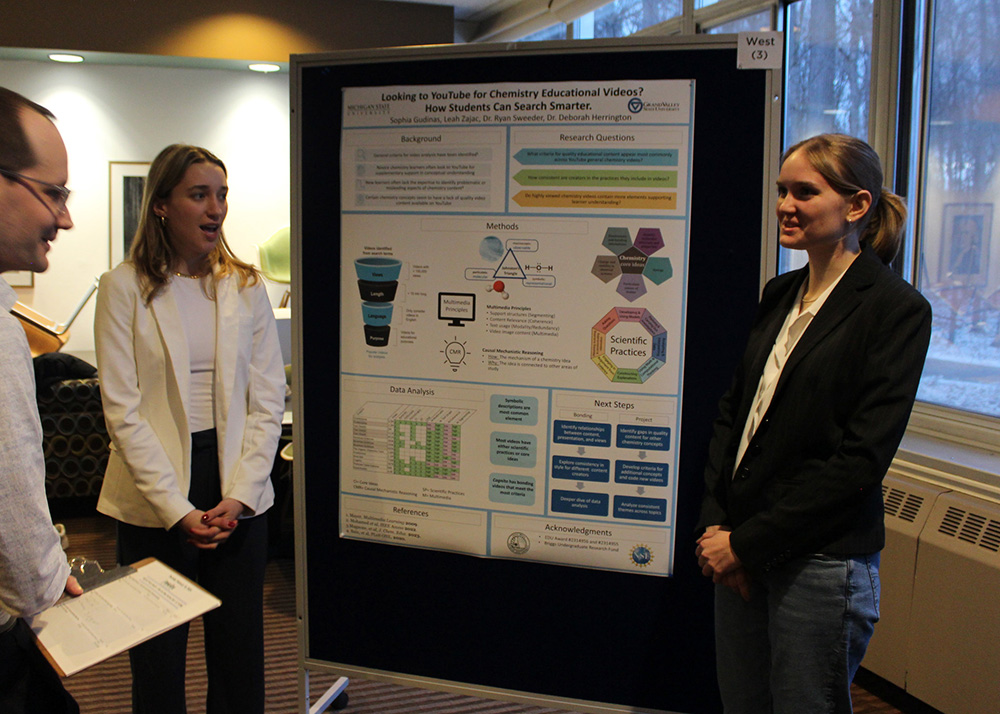Determining the quality of chemistry educational videos on YouTube
May 23, 2024 - Blythe White
How well do popular educational videos on YouTube follow best practice for helping viewers learn chemistry? A collaborative grant by researchers from Michigan State University and Grand Valley State University seeks to answer that question.
Since its founding in 2004, the video platform YouTube has seen a meteoric rise in global popularity, which was accelerated by the COVID-19 pandemic. The Pew Research Center recently reported that YouTube is the most widely used social media platform by adults ages 18 and older in the U.S., with roughly 8 in every 10 adults surveyed reporting ever using it. The popularity of the platform skews young, with 93% of respondents between ages 18-29 stating their frequent use of it.
YouTube offers a wide array of entertainment, tutorials, product reviews, and educational videos. The number of educational videos grew dramatically during the COVID-19 pandemic, offering students flexible, on-demand learning opportunities. But do widely-viewed educational videos convey accurate concepts? Do they support student learning? And how can faculty filter through thousands of videos to suggest the best ones for students?

 For researchers Ryan D. Sweeder, professor of chemistry at Michigan State University’s Lyman Briggs College, and Deborah G. Herrington, professor of chemistry at Grand Valley State University, parsing and evaluating introductory chemistry instructional videos on YouTube was a daunting, yet worthwhile venture that could potentially benefit students and faculty across STEM disciplines.
For researchers Ryan D. Sweeder, professor of chemistry at Michigan State University’s Lyman Briggs College, and Deborah G. Herrington, professor of chemistry at Grand Valley State University, parsing and evaluating introductory chemistry instructional videos on YouTube was a daunting, yet worthwhile venture that could potentially benefit students and faculty across STEM disciplines.
The two received $400,000 in funding by the National Science Foundation in 2023 for their project: Collaborative Research: Developing and Testing a Framework to Evaluate the Quality of Chemistry Instructional Videos Students are Watching on YouTube. The project aims to identify how well instructional videos follow best practices for supporting students’ learning of chemistry concepts and evaluate the extent to which the most frequently watched videos incorporate them.
To determine the quality of instruction within the videos and how it would support students’ conceptual understanding, Sweeder, Herrington and their team look for the presence of science practices, disciplinary core ideas, or causal mechanistic reasoning. To assess the quality of the delivery of instructional information, they look for adherence to Mayer’s 12 principles of multimedia learning (e.g., conveying information in both text and images, organizing information into short, coherent segments for learners, using everyday language for audiences). The team is also assessing the quality of closed captions and how the videos use analogies or visuals to help learners at all stages understand core principles.
The framework for video analysis and early results have been shared at several conferences including the Spring 2024 National American Chemical Society, the Spring 2024 LBC Research Showcase, and the campus wide University Undergraduate Research and Arts Forum.


The undergraduate student researchers with the project have also benefited through the analysis. Herrington writes, “In talking with the students, working on this project has improved their understanding of core chemistry concepts, helped them develop better strategies to search for and evaluate videos to support their learning, and made them more discerning both in the videos they choose to support their learning and how they watch those videos.”
Sweeder writes, “We are seeking not only to analyze what videos currently exist, but we think our framework will provide future video creators better guidelines for principles they should be considering when creating videos as well as understand where there are content gaps in the existing videos available to learners.”
Herrington and Sweeder also hope the framework, with minor modifications, will be useful in other chemistry subdisciplines and in science disciplines beyond chemistry. They will work to disseminate the results of their study to help both instructors and students be able to readily find high quality videos that support learning, and equally importantly, understand what to look for in other educational videos.

